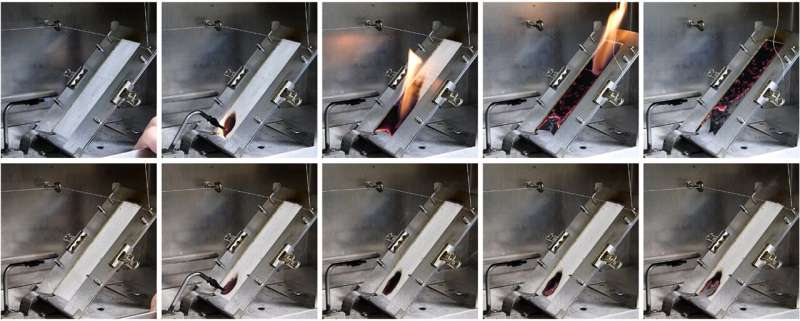January 19, 2023 report
This article has been reviewed according to Science X's editorial process and policies. Editors have highlighted the following attributes while ensuring the content's credibility:
fact-checked
peer-reviewed publication
trusted source
proofread
Mixing varieties of cotton to produce non-flammable fabrics

A team of researchers at the U.S. Department of Agriculture has found that interbreeding varieties of cotton can produce new varieties that can be used to make non-flammable fabrics. In their paper posted in the open-access journal PLOS ONE, the group describes studying multiple interbred varieties of flammable cotton to find new varieties with anti-flammable properties.
Over the years, cotton has become a standard material for making clothes that feel comfortable against the skin and do not lead to irritation. Unfortunately, garments made from cotton tend to burn quite easily and readily, leading to injury if they catch fire. To reduce the problem, agents are added to reduce the flammability of cotton fabric. Unfortunately, these agents tend to be harmful to the environment, cause irritation and reduce comfort. The fabrics also sometimes lose their protection after being washed a few times.
In this new study, the researchers noted that some brown varieties of cotton have flame-retardant qualities, and they wondered if some of the genetics might also be hidden in white varieties. To find out, they studied varieties that were interbred and contained certain flavonoids linked to flammability found in brown varieties.
The USDA has been breeding and interbreeding cotton for many years, hoping to find new varieties with better traits than those currently in use. In studying those that have been developed, the researchers found 11 strains that they believed might offer what they were looking for. They tested each by burning samples in their native form. They then chose the five that fared the best for further testing.
The next stage of testing involved creating fabric from each of the five strains they had chosen and attempting to set them on fire. They found that four of the five samples not only withstood the application of a flame, but extinguished it. The researchers also tested the fabrics they made to see if they had lost any of their desirable characteristics and found that they had not.
The researchers plan to continue their efforts, seeking to learn more about the genetics behind the nonflammable materials and to make sure they continue to resist burning even after being washed and worn many times.
More information: Gregory N. Thyssen et al, Flame resistant cotton lines generated by synergistic epistasis in a MAGIC population, PLOS ONE (2023). DOI: 10.1371/journal.pone.0278696
Journal information: PLoS ONE
© 2023 Science X Network



















